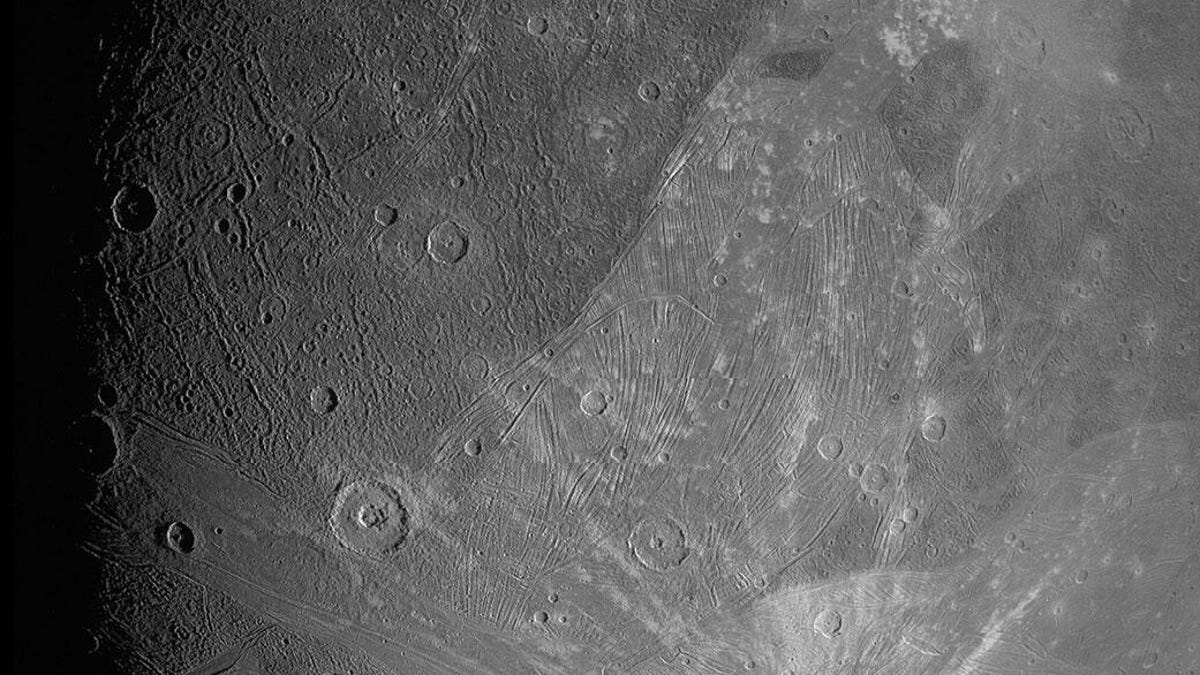NASA spacecraft captures astonishing views of icy Jupiter moon Ganymede
Wowza. The Juno spacecraft performed a close flyby on Monday and delivered some eye-popping images.
In January, NASA extended the mission for its Jupiter-studying Juno spacecraft, giving it a new frontier to explore: the gas giant's wild moons. Now Juno has gifted us with stunning new close-up images of the fascinating Ganymede, Jupiter's largest moon.
Ganymede is an icy world hiding a salty subsurface ocean. Juno snapped the views during a close flyby on Monday. The craters and striated landscape features stand out in a shot from the spacecraft's JunoCam imager.
"This is the closest any spacecraft has come to this mammoth moon in a generation," Juno principal investigator Scott Bolton said in a NASA statement on Tuesday. "We are going to take our time before we draw any scientific conclusions, but until then we can simply marvel at this celestial wonder – the only moon in our solar system bigger than the planet Mercury."
Juno's Stellar Reference Unit navigation camera took this shot of Ganymede's dark side on June 7, 2021.
A second image from Juno's Stellar Reference Unit navigation camera shows the dark side of Ganymede and highlights some of the moon's many craters.
As more Juno data returns to Earth, researchers will be able to piece together a color portrait of Ganymede.
The flyby isn't just for the pretty pictures. NASA said Juno is studying the moon's "composition, ionosphere, magnetosphere, and ice shell while also providing measurements of the radiation environment that will benefit future missions to the Jovian system."
Juno, which launched in 2011, was originally scheduled to end its mission in July 2021, but will now continue its work until September 2025 or the end of its life, whichever comes first.
This first taste of Ganymede hints at the exciting visuals we have to look forward to. Onward, Juno.
Follow CNET's 2021 Space Calendar to stay up to date with all the latest space news this year. You can even add it to your own Google Calendar.


